Uncategorized
Root and Branch Post Mortem: Qualified Success
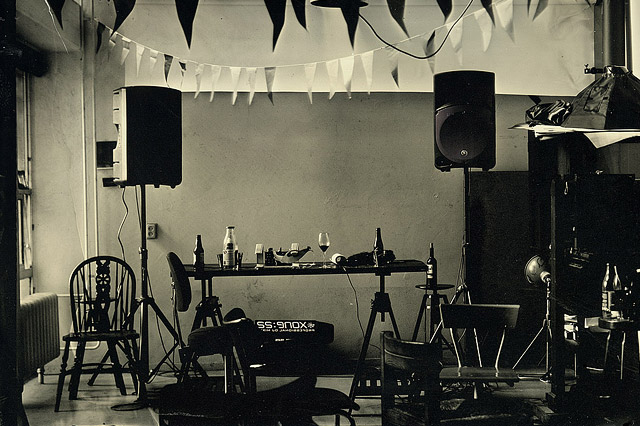 Your view of Downwinders' first Branch and Root Revue grassroots conference depends very much on which event you went to and what you were expecting. For the most part however, participants seemed to agree that for a first time effort it was a valuable addition to the annual activist calendar.
Your view of Downwinders' first Branch and Root Revue grassroots conference depends very much on which event you went to and what you were expecting. For the most part however, participants seemed to agree that for a first time effort it was a valuable addition to the annual activist calendar.
Beginning Wednesday night the 4th, we sponsored the November show of Bar Politics featuring an evening of satire targeting local environmental scandals and screw-ups. A full crowd showed up at the Rustic to see Josh Kumler and Company hit one out of the…bar. Smog and the woefully misnamed Texas Commission on Environmental Quality were targets. So was the City of Dallas and it's attempts to "civilize" the Trinity river bottom into more productive uses like an equestrian center and golf course.
Amidst tornado warnings, we hosted a brainstorming session at the Texas Theater on Thursday evening that began a discussion on the "Future of Fighting Fracking in Texas." Although not as well attended as we hoped, the momentum from this first session led into Saturday's SRO Part 2, and what emerged was several new, more coordinated strategies that look like they might have a future. If you want more information about these brainstorming sessions and what they produced, please get in touch with Tamera Bounds of Mansfield Gas Well Awareness.
With the announcement that the Keystone pipeline was dead, Friday the 6th was a good day to be an environmentalist. An energetic group of 30-40 DFW residents celebrated by setting-up shop across the street from EPA Regional headquarters in Dallas and constructing a huge block-letter "S.O.S." on Munger street, along with a gigantic inflatable inhaler with the message: "HELP! We live in Texas." EPA employees got the message that we need them to take over enforcement of federal environmental laws instead of letting a state government that doesn't even believe smog is a problem delay, block and challenge needed reforms.
Without a doubt the most well-attended and popular event of the entire conference was our one-day "University of Change" on Saturday at First Unitarian Church. Between 60 and 70 activists were split into two tracks of nine workshops, including "How to Get Better Media Coverage," "How to Do Your Own Environmental Sampling," and "The Basics of Fighting Permits in Texas." Whatever second thoughts organizers might have at the beginning of the week were quickly dispelled by the high level of energy produced by these workshops – and carried over into a two-hour post-conference social gathering at the near-by Five Creeks Tavern.
In large part the success of this year's inaugural Root and Branch can be traced directly to the featured guests – Lois Gibbs and her husband Stephen Lester. It's hard to imagine any other living environmental legend being a better fit with the personality of Downwinders at Risk, AND having the spectrum of skills and resources in demand by local activists. Down-to-earth, direct, approachable, empathetic, incredibly helpful – the couple was described by participants as all of these things during their stay.
One of the most satisfying outcomes was being able to acquaint or re-acquaint people with Lois' incredible personal and professional story. Workshop participants not born when Love Canal was making national headlines learned why it's a milestone event. Those of us already in the know were grateful for so much face time with someone who's been described as "the Rosa Parks of the environmental movement."
Despite constant badgering, media coverage was at best sketchy, and at worst, non-existent. This was especially disappointing to see from publications who one would think would be more citizen-friendly, including the Dallas and Texas Observers. Even the Star-Telegram ran a preview piece. Only the reliable Fort Worth Weekly came through in the way you'd think an "alt media source" would.
Thanks to all who came to one or more events. Thanks to all of our sponsors and donors. A round of cheers for the Downwinders at Risk board, who took a leap of faith and landed on their feet. We're already mulling the lessons learned and looking toward Root and Branch 2016. After the holidays, we'll be looking for help to put together next year's festivities. Let us know if you're interested.
Weren’t There? Watch Last Night’s “Get Polluted with Bar Politics” Anyway
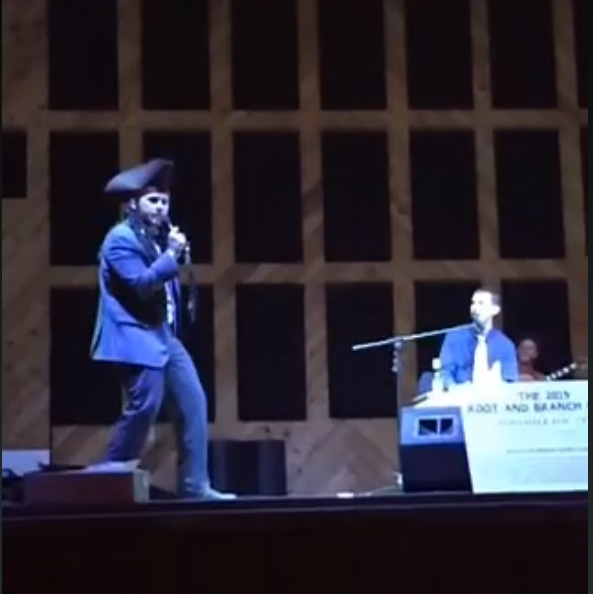 Here's the link. Consensus is that it was one of their better efforts.
Here's the link. Consensus is that it was one of their better efforts.
Rainstormin’ Outside? Join us for Some Serious Brainstormin’ Inside
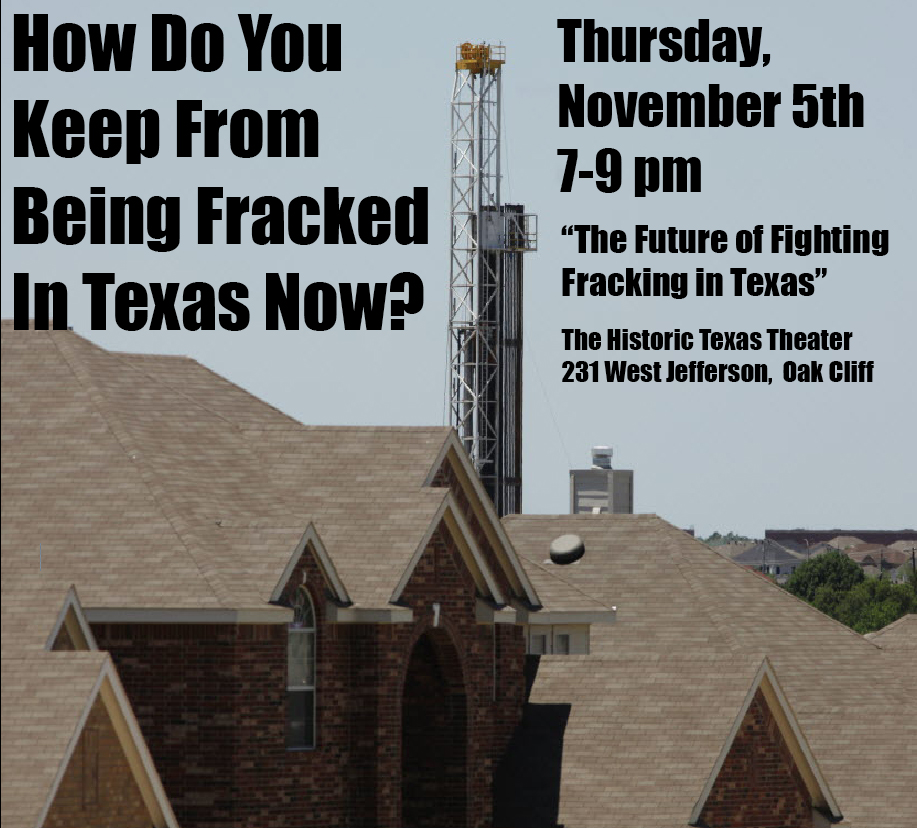
Join us in a public discussion about what happens now that the state legislature has taken away cities' right to regulate fracking.
Listen and Join In. It's a strategy session, not a presentation. We want and need your input.
Panelists include:
Lois Gibbs – Center Center for Health, Environment & Justice and founder of America's anti-toxics movement
Tom "Smitty" Smith – For over 30 years, Smitty has been the "people's lobbyist" in Austin, serving as Director of Public Citizen/Texas
Adam Briggle – UNT Philosophy professor, sometime civil disobedient protester, and a leader of Frack Free Denton
Zac Trahan – Former Dallas Director of the Texas Campaign for the Environment, a key leader in the Dallas Fracking Wars
Ranjana Bhandari – One of the founders of new group Livable Arlington, and working to create a statewide alliance
Marisa Perales – an environmentally-friendly attorney in private practice with Frederick, Perales, Allmon & Rockwell.
Moderated by Tamera Bounds, a founder of Mansfield Gas Well Awareness, and the Texas Grassroots Network.
Don't Miss This Opportunity
to Take Back the Future
7pm to 9pm
The Historic Texas Theater
231 West Jefferson in Oak Cliff
FREE ADMISSION
Tonight’s The Night….

(NW Corner of Lemmon and Central)
TCEQ Makes Sure Friday Really is an Ozone Action Day
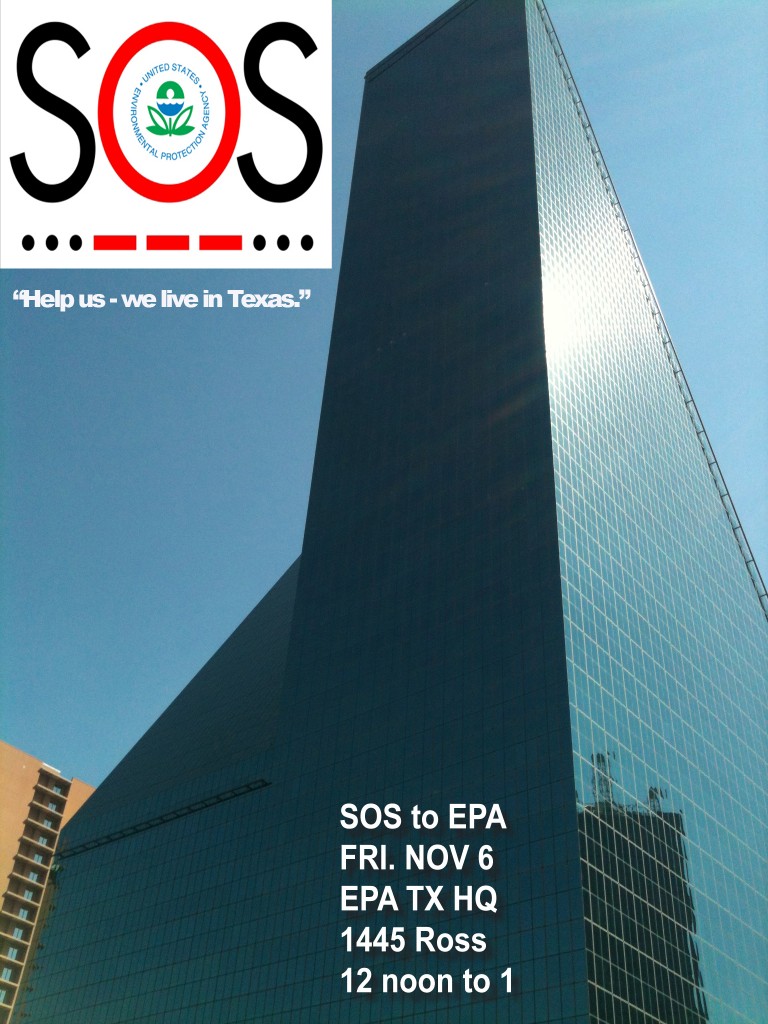
Just like the South attempted to "nullify," or disregard federal civil rights legislation in the 1960's, so Texas is now trying to nullify federal environmental laws.
For that to change, we have to speak-up and demand EPA action. We need a strong federal response to the ridiculous foot-dragging and litigating by Texas
So we're sending a message they can see all the way up on the 12th floor of EPA Regional Headquarters on Ross in the FountainPlace building.
We're constructing a huge "S.O.S." to let the Agency know we need its help to overcome Texas' resistance.
The more people, the bigger the message.
It's another part of Root and Branch 2015
Arlington Conservation Council, Beyond Coal/Texas, Code Pink Greater Dallas, Earthworks, Environment Texas, Dallas Sierra Club, Liveable Arlington, Mansfield Gas Well Awareness, North Texas Light Brigade, Public Citizen/Texas, Texas Campaign for the Environment, Texas Grassroots Network, Veterans for Peace
TCEQ to Reveal 2nd "New" DFW Air Plan in Less than 10 months at Regional Air Quality Meeting This Friday – After our EPA Action
NEW SMOG STUDY BY ITS UNT AUTHORS
1:30 pm THIS FRIDAY NOV. 6th
North Central Texas Council of Government HQ
616 Six Flags Rd
Arlington
SO…FRIDAY REALLY IS OZONE ACTION DAY
12 NOON to 1
Join us in downtown Dallas to urge EPA to take a tough stand with Texas
in protecting our air and water
1:30 – 3:00
Then caravan over to Arlington and get a whole new set of reasons why we need that federal help.
Help us show EPA – AND AUSTIN – there's a demand for cleaner air and water in Texas.
Pair of Unprecedented Studies Challenges Texas’ Official Indifference to DFW Smog
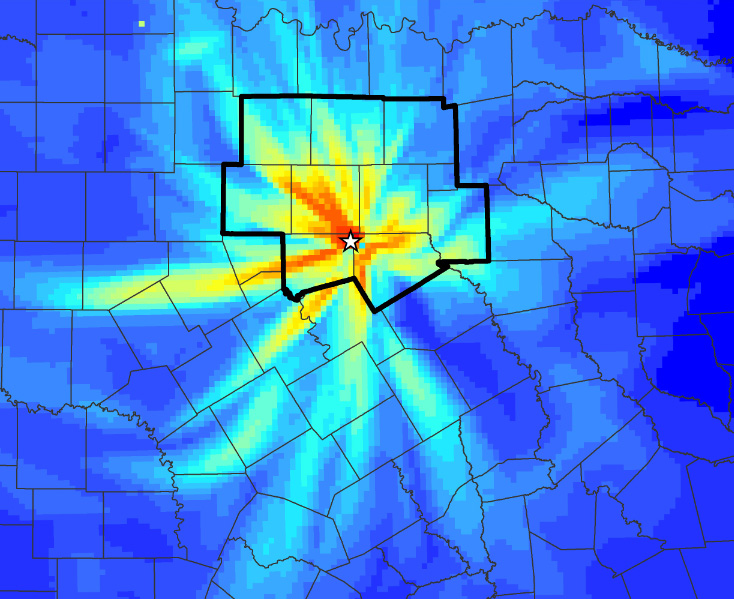 (Dallas)—- Two first-of-their-kind studies on Dallas-Fort Worth smog, released in tandem today, challenge the State’s assertions that dirty air has little public health impact on local residents, and new controls on major polluters won’t make a difference.
(Dallas)—- Two first-of-their-kind studies on Dallas-Fort Worth smog, released in tandem today, challenge the State’s assertions that dirty air has little public health impact on local residents, and new controls on major polluters won’t make a difference.
Using the school’s banks of supercomputers, engineers at the University of North Texas replicated the massive computer model being used by the Texas Commission on Environmental Quality to write the region’s new clean air plan. They then used the model to test the effects on local ozone when pollution levels were reduced from aging coal plants in East and Southeast Texas, the three cement plants in Midlothian, and oil and gas facilities in the Barnett Shale and elsewhere – tests the state agency had not done on its own model in almost a decade.
They found such reductions, mimicking the effects of modern pollution controls, would propel North Texas into compliance with the current smog standard and decrease smog significantly around the region. It’s the first time anyone outside of Austin or the TCEQ has had access or control over a region’s “non-attainment “ modeling.
in today's Dallas Morning News.
Accompanying the release of the UNT work was another unprecedented effort by Dr. Robert Haley of the Texas Medical Society using EPA “benefit mapping” software to estimate public health benefits of cutting smog levels by at least five parts per billion. Complying with the current standard in DFW would require a decrease of more than 8 parts per billion from 2015 levels.
Haley found a five part per billion decrease would have large medical and economic consequences, including preventing over 75 deaths, 350 Emergency Room Visits, 160 hospital admissions, and 120,000 lost school days in the 10-county DFW nonattainment area annually, totaling over half a billion dollars in medical care costs and lost productivity.
“Together, these studies provide a powerful rebuke to the state’s inaction on dirty air in DFW,” said Jim Schermbeck, Director of Downwinders at Risk, the 21-year old clean air group that financed the UNT effort. “Using the data from these two studies, it’s clear reducing pollution from these major sources, especially the coal plants, would have a large and beneficial impact on North Texas public health, and save the local economy millions of dollars.“
Frustrated by over two decades of official state modeling that has predicted success but delivered five failed air plans in a row, Schermbeck said his group wanted a second opinion going into a new round of planning, as well as an opportunity to look at different control strategies TCEQ refused to examine.
In the past, such an undertaking would have cost millions. But the price of computing has come down to such an extent that even huge, complicated tasks like modeling the DFW airshed can be performed for a fraction of what they once cost.
Downwinders wrote grants for the project and assembled $120,000 in financing from local DFW sources including the Harold Simmons Foundation, Trammell S. Crow, Garrett Boone and the Dallas Foundation.
Dr. Kuruvilla John, Associate Dean of Research and Graduate Studies, Professor of Mechanical and Energy Engineering, College of Engineering at UNT, was chosen because of his accessibility, lower transportation costs, and past collaborations with the TCEQ. Dr. John reported to a committee of current and former officials, chaired by former Dallas County Judge Margaret Keliher, and including Dallas County Commissioner Theresa Daniel and Dallas City Councilwoman Sandy Greyson.
Schermbeck noted Dr. John built a duplicate of the Texas Commission on Environmental Quality’s computer model used to design a new DFW clean air plan. All the variables used in the model are the state's, including the meteorology and the projected emissions of pollution from all categories of sources. None of the information used in the model originated with Downwinders at Risk or the UNT engineers. In fact Dr. John benefited from TCEQ’s technical assistance in completing his duplicate and previewed the results to TCEQ officials in September.
In all, UNT ran at least 15 different scenarios through the TCEQ model that examined the impacts of reductions of smog-forming pollution from individual sources, as well as combinations of reductions. Among the most significant findings:
- Without a doubt, the single largest industrial source of DFW smog is the pollution from antiquated coal-fired power plants in East and Southeast Texas. If you want to have a quick and dramatic reduction in DFW ozone levels, installing modern controls on these coal plants would be the first step.
- Conversion of the Midlothian cement plants from dirtier wet kilns to cleaner dry kilns over the last decade has improved air quality, but they remain sizable polluters. Adding modern controls could significantly decrease downwind smog, particularly in Tarrant and Johnson Counties.
- Decreases in regional smog from reductions in pollution from oil and gas sources skew lower since those sources are primarily located in the five western-most, downwind counties of the DFW non-attainment area. Even so, reductions in pollution from oil and gas have disproportionally higher impacts because they affect many of the historically worst performing air quality monitors.
- The most effective combination of control measures studied were: 1) reducing smog-forming Nitrogen Oxide (NOx) pollution by 90% or more at the coal plants, 2) reducing NOx by 90% at the cement plants, and, 3) electrification of all large gas compressors, or a 100% reduction in NOx from those sources. This combination brings down smog levels at all 20 DFW monitors an average of 5 parts per billion (ppb) and lowers the regional average to below 75 parts per billion – the current smog standard DFW has yet to meet.
- UNT’s results have already answered many of the questions the EPA posed to the state in its official comments concerning the proposed Dallas-Fort Worth air plan earlier this year, including,
“How would a reduction in NOx emissions from utility electric generators in just the counties closest to the eastern and southern boundaries of the DFW area impact the DFW area?”
As has been noted, UNT found reductions in smog-forming pollution from these coal plants have a profound impact on DFW smog levels. UNT’s study now becomes a source of information about the state’s plan for the EPA when the state itself can’t, or won’t, provide it
6. The results of this study directly contradict statements made in the Texas Commission on Environmental Quality’s most recent DFW air plan. For example,
"…the impact of the suggested NOX controls on East Texas EGUs is not expected to have a substantive impact on Denton Airport South monitor in the DFW area.”
In fact, UNT’s results show removing 90% of the coal plants’ NOx would reduce ozone by as much as 4. 5 parts per billion at the Denton monitor and bring the monitor’s annual average down below the current required standard of 75 ppb.
DFW has been in continual violation of the Clean Air Act for almost 25 years because of its chronic smog problem. Despite state and industry claims that air quality is getting substantially better, progress has stagnated over the past five years. In 2010, the regional smog average was 86 ppb. Today, it’s 83.
DFW is one of only four non-California metropolitan areas the EPA estimates will still not be in compliance with the current 75 ppb standard by a deadline of 2018. It’s also one of only about 10 metropolitan areas not expected by EPA to meet the brand new proposed standard of 70 ppb by 2025.
Critics of the state, such as Schermbeck, note this lack of progress corresponds to anemic air plans proposed by Austin, which never include new controls on any major polluters. Schermbeck says the UNT study provides a technical justification for now including those controls, if not to the state, which he discounts as an “unserious participant,” at least to the EPA and local officials. It’s this unprecedented breaking-up of the state’s monopoly on the technical expertise upon which the entire local air quality planning process relies that Schermbeck thinks is as important as the results themselves.
“Up to now, if the state didn’t want to look at a control measure, it didn’t get looked at,” said Schermbeck. “If the state said a new technology wouldn’t do any good, you just had to take their word for it. But if a local grassroots group can scrape-up enough funding to provide a viable alternative, there’s no excuse for DFW officials to be completely dependent on the state anymore.”
Downwinders and other clean air advocates are already using both studies to argue on behalf of a Dallas County Commissioners Court resolution coming up for a vote this Tuesday, October 20th. Sponsored by Commissioner Daniel, it urges the judge hearing the EFH bankruptcy case to require modern controls on Luminant’s three East Texas coal plants as a condition of their sale.
Schermbeck also predicted the UNT study would have a very large impact on how the current DFW air plan would be drafted, and even its chances of being approved by EPA. “UNT’s use of TCEQ’s own model to quantify the effects of off-the-shelf control technologies provides answers to questions EPA already had about the plan, but which TCEQ seems reluctant to respond. Because there’s another set of hands on the model that can produce those answers, TCEQ has significantly less wiggle room to rationalize why they aren’t requiring the controls their own data shows are effective at reducing smog.”
It’s also likely the UNT results will be used in an effort to tie the East Texas coal plants to the fate of the DFW nonattainment area under the new 70 ppb ozone standard. “It’s unfair and bad public policy for those plants to have such a huge impact on our air quality but be untouched by our area’s anti-pollution measures,” said Schermbeck, whose group successfully petitioned the EPA to bring Ellis County and the Midlothian cement plants into the DFW nonattainment area over a decade ago.
Schermbeck looks at both studies as evidence of a trend toward greater democratization in policy-making because of grassroots access to heretofore prohibitive resources. “Both of these studies show the ability of new technology to empower groups that were previously at the mercy of Big Government or Big Industry. When citizens have new tools, things change.”
More Information on the UNT study can be found at: www.dfwozone study.org.
THANKS SO MUCH
 Our gratitude and sincere thanks to everyone who contributed money to Downwinders during yesterday's Giving Day marathon/assault. We came within $500 of reaching our goal of $7500. That's the closest we've ever come to breaking that ceiling. Stay tuned for more details about our Root and Branch grassroots conference and the debut of our large air quality modeling project at the end of the month
Our gratitude and sincere thanks to everyone who contributed money to Downwinders during yesterday's Giving Day marathon/assault. We came within $500 of reaching our goal of $7500. That's the closest we've ever come to breaking that ceiling. Stay tuned for more details about our Root and Branch grassroots conference and the debut of our large air quality modeling project at the end of the month
Late Night Smog Special: 2 Hours Left To Support Cleaner Air in DFW
 Smog got worse this year. The three-year rolling average EPA uses to keep track of dirty air went up twice in two days.
Smog got worse this year. The three-year rolling average EPA uses to keep track of dirty air went up twice in two days.
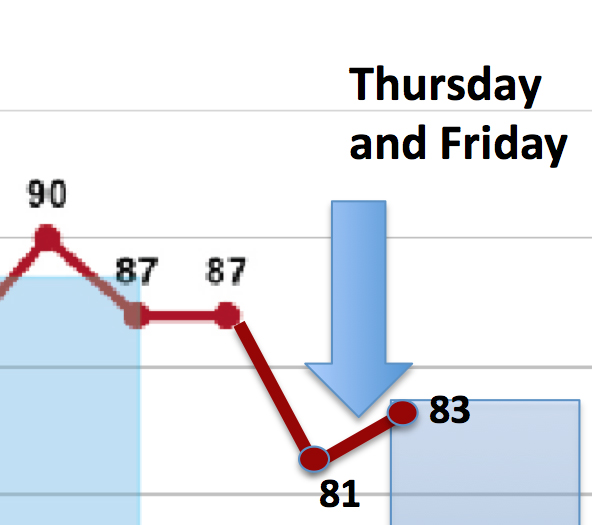 It went up even though the state's second "do-nothing" air plan kicked-in THIS summer. That's right. The first ozone season the state's plan is supposed to make better is one that saw smog levels rise. Who could have predicted?
It went up even though the state's second "do-nothing" air plan kicked-in THIS summer. That's right. The first ozone season the state's plan is supposed to make better is one that saw smog levels rise. Who could have predicted?
Downwinders could.
We've been fighting this second "do-nothing" air plan from Austin for over 16 months now. We've been challenging its numbers. We've been questioning its application of the law. And we said there was no way it could work. Earlier this year, the EPA went on record agreeing with many of our arguments. Approval from DC is now at least in doubt.
Downwinders at Risk is the only group that makes it a priority to monitor and participate in the decision-making surrounding DFW air quality. We've used it to modernize the cement industry. We're using it again to modernize the East Texas Coal Plants, oil and gas operations, and yes, the cement plants one more time.
We're only $600 – $700 away from reaching our Giving Day goal of $7500 by Midnight. Reaching it means we can fully fund our first-ever grassroots citizens conference. Your contribution of $25 goes further in the next couple of hours than it will after the clock strikes Twelve.
If you've already donated, thanks very much. If you haven't, please consider helping us out. Not because we do good work but because it's in your own self-interest to have us out there fighting for your lungs. Thanks.
You + Us = Disappearing Smokestacks
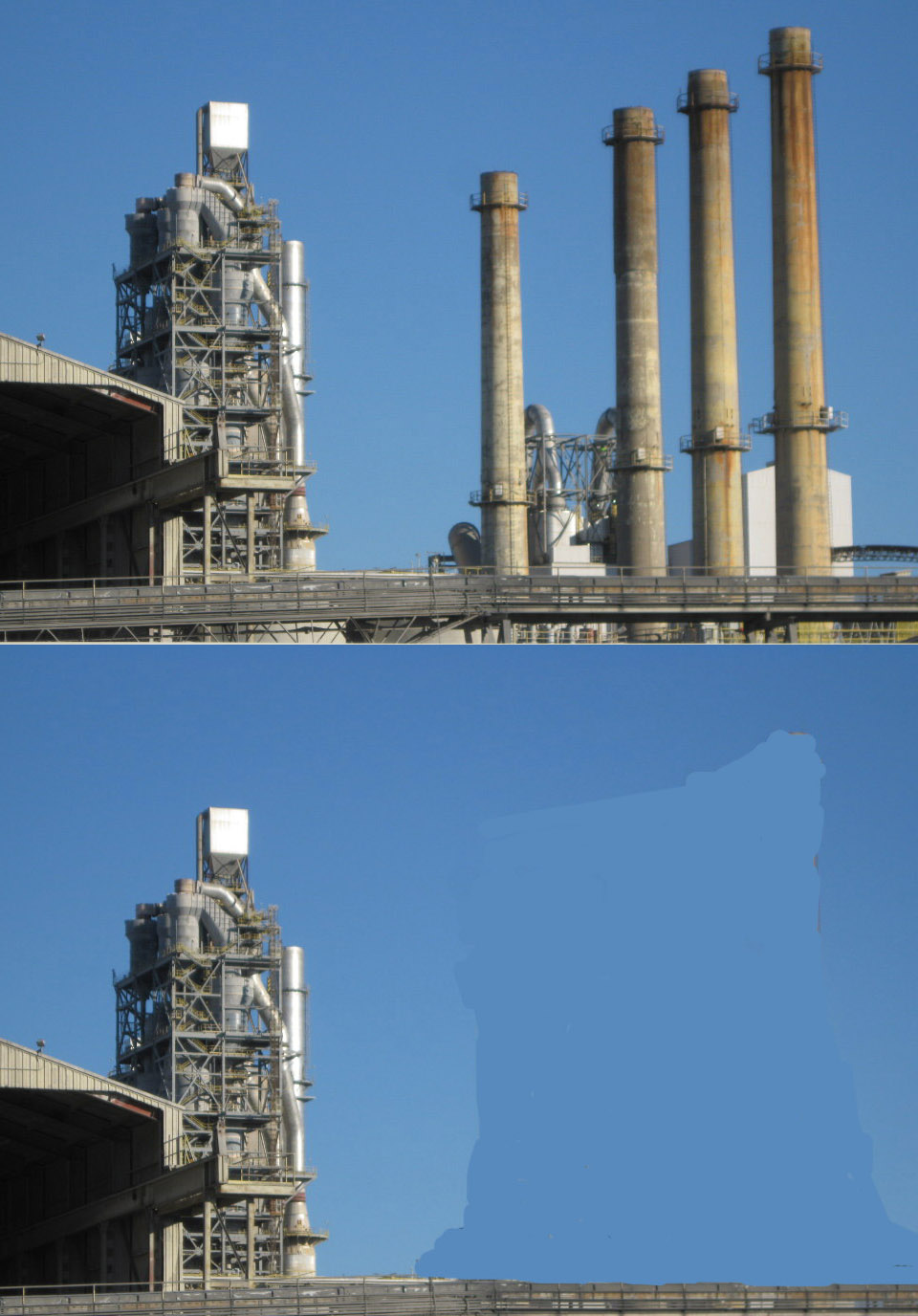 How's this for a track record over the last seven years?
How's this for a track record over the last seven years?
TXI's cement plant no longer has four hazardous waste-burning kilns.
The smokestacks are gone.
Likewise, the smokestacks from Frisco's outlaw Exide lead smelter are gone as well.
And there are still no drilling rigs in Dallas.
When citizens come together with a plan of action and the resources to follow-though, we make things change for the better. We make the air cleaner. We make people healthier.
Now we need you to step up and help fill our fundraising smokestack with "funds, not fumes"
 Please Reward Effective Local Organizing That Gets Cleaner Air in Your Lungs.
Please Reward Effective Local Organizing That Gets Cleaner Air in Your Lungs.
Here's our Mission Statement:
"Downwinders at Risk Education Fund is dedicated to taking effective action on behalf of those being harmed by air pollution. Our goal is to build a strong grassroots constituency and create new strategies for clean air in North Texas. We do this by informing, connecting and mobilizing citizens to become active participants in the decision-making that affects the air we breathe. In doing so, we improve both the quality of our air and the quality of our democracy."
We only have a few hours left to raise the the last $3000 of our $7500 goal.
Thank you for your consideration.
Mid-Giving Day Report: We’ve got 1/3 rd of what we need. Help us make it 3/3rds.

As of right after lunch, we'd reached our goal of hitting $2500. Thanks to everyone who made that possible. But that's only 1/3rd of what we need to raise today to make sure we have enough money to sponsor a first-evergrassroots activists conference. Help us get that other $5000 by Midnight tonight. Share the link to those who have reason to care about clean air – asthmatic kids, parents with COPD, those with high heart attack or stroke risks. New-or soon-to-be moms and dads. Every little bit helps, but those amounts of $25 or more get larger by way of the Communities Foundation formula. Thanks…… https://www.northtexasgivingday.org/#npo/downwinders-at-risk-education-fund

